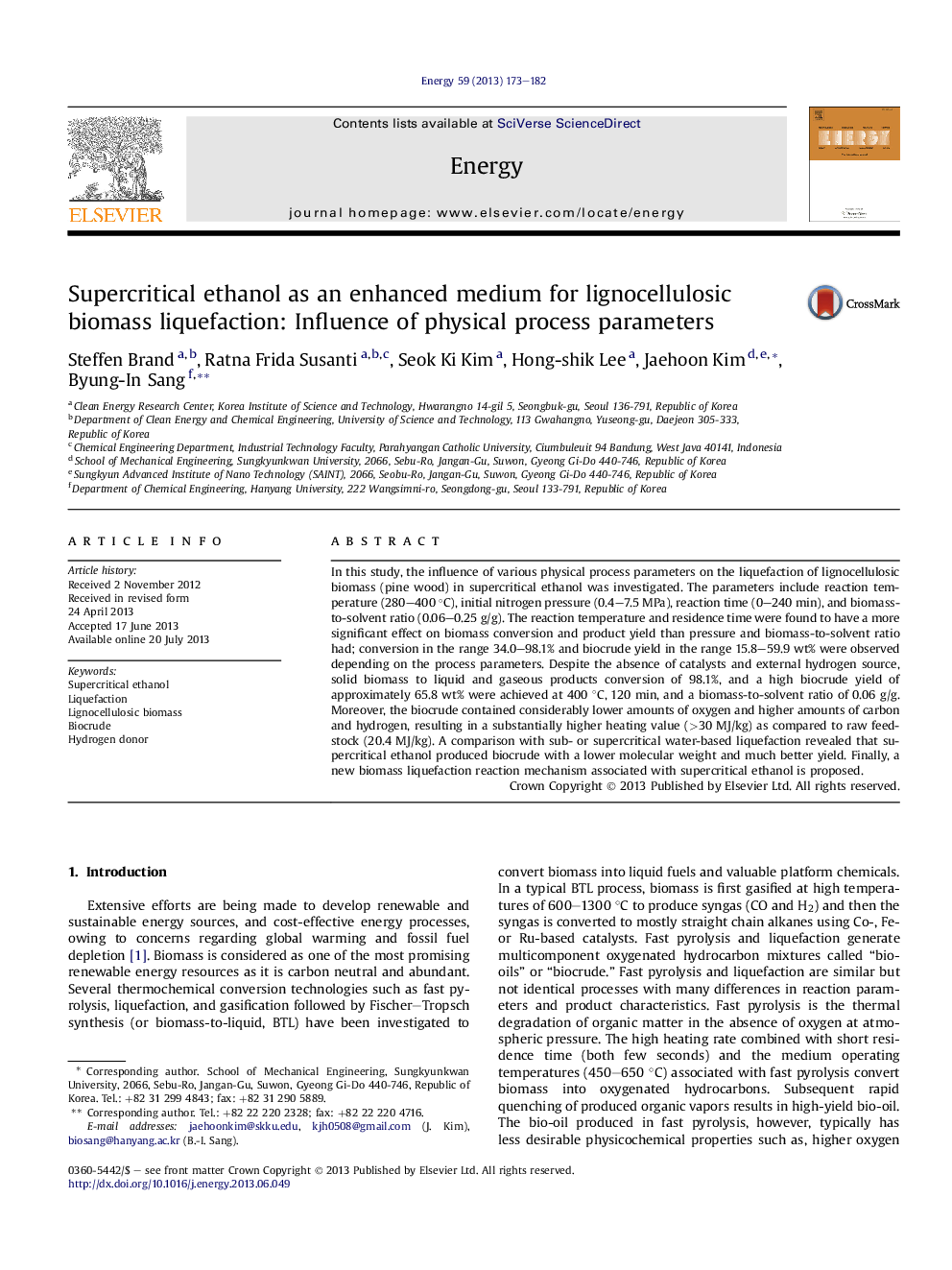| Article ID | Journal | Published Year | Pages | File Type |
|---|---|---|---|---|
| 8079197 | Energy | 2013 | 10 Pages |
Abstract
In this study, the influence of various physical process parameters on the liquefaction of lignocellulosic biomass (pine wood) in supercritical ethanol was investigated. The parameters include reaction temperature (280-400 °C), initial nitrogen pressure (0.4-7.5 MPa), reaction time (0-240 min), and biomass-to-solvent ratio (0.06-0.25 g/g). The reaction temperature and residence time were found to have a more significant effect on biomass conversion and product yield than pressure and biomass-to-solvent ratio had; conversion in the range 34.0-98.1% and biocrude yield in the range 15.8-59.9 wt% were observed depending on the process parameters. Despite the absence of catalysts and external hydrogen source, solid biomass to liquid and gaseous products conversion of 98.1%, and a high biocrude yield of approximately 65.8 wt% were achieved at 400 °C, 120 min, and a biomass-to-solvent ratio of 0.06 g/g. Moreover, the biocrude contained considerably lower amounts of oxygen and higher amounts of carbon and hydrogen, resulting in a substantially higher heating value (>30 MJ/kg) as compared to raw feedstock (20.4 MJ/kg). A comparison with sub- or supercritical water-based liquefaction revealed that supercritical ethanol produced biocrude with a lower molecular weight and much better yield. Finally, a new biomass liquefaction reaction mechanism associated with supercritical ethanol is proposed.
Related Topics
Physical Sciences and Engineering
Energy
Energy (General)
Authors
Steffen Brand, Ratna Frida Susanti, Seok Ki Kim, Hong-shik Lee, Jaehoon Kim, Byung-In Sang,
